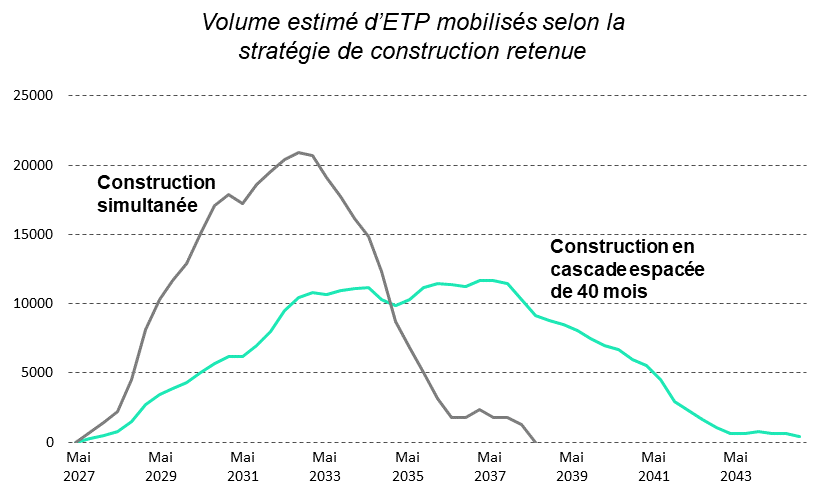[ad_1]
By launching the nuclear sector at full speed in the construction of six new EPRs, the Government is facing a wall of recruitment. Several families of trades being in critical situation, the question arises of the spreading out of construction sites.
Parliamentarians have not yet had the opportunity to give their opinion on France’s nuclear policy, but all the sector is already on deck to organize the construction of six new EPR 2 reactors. Beyond the democratic denial represented by this choice made by the executive power (from Emmanuel Macron’s Belfort speech in 2022) without the approval of power legislative, many uncertainties are emerging: what will really be the design of these EPRs compared to the head of the Flamanville series? How soon can three pairs of reactors actually be built on the already existing sites of Penly, Gravelines and Bugey? At what cost? And with what new needs upstream for the supply and enrichment of uranium, and downstream for treatment of radioactive waste ? While EDF has just announced new delays and additional costs for the Hinley Point C EPR project in the United Kingdom, one might think that the French industrial project is beyond the strength of a sector that has experienced numerous setbacks in recent years. Even that it would be more reasonable to abandon it to concentrate our resources on sobriety, energy efficiency and renewable energies…
Questioning the nuclear sector
But if the Government persists, one of the most lively questions concerns the resources and skills necessary for this relaunch of the atom. A specialized consulting firm, Sia Partnersstudied the subject based on the observation that the sector had actually had a slump between the end of the first nuclear program (from 1977 to 1999) and the laying of the first concrete for the Flamanville EPR in 2007. This “upgrade in lasting sleep” was reinforced by the fact that the accident of Fukushima in Japan in 2011 slowed down the desire to launch other EPRs. In addition, the examination of the successive delays and the increase in costs of the Flamanville EPR in the folz report in 2019 coldly placed on the table a “widespread loss of skills, their fallible management as well as inappropriate project governance”.
Aware of having to move up the slope to be credible, the sector – first and foremost EDF and Framatome – has reviewed its way of managing skills and its training programs. A minimum to ensure the quality of the missions from one end to the other of the chain of such a complex EPR project. But we still need to be able to recruit! Like all other industrial sectors, the nuclear power industry is short of profiles in several families of professions “considered critical for meeting the construction objectives of six new EPRs”. Some are in tension overall in France, resulting in competition which does not facilitate recruitment (process engineering, electrical work, control and quality, project management), but others, specific to nuclear power, are in a even more critical situation (radiation protection, welding and mechanical work, civil engineering, nuclear safety).
Stagger the pace of EPR construction
Faced with this human resources challenge, Sia Partners is discussing two different construction options from May 2027. The first is the simultaneous holding of the six construction sites which would give the advantage (in theory, if all goes well) of carrying out an upgrade rapid and almost simultaneous operation of reactors between 2035 and 2038, and to enable optimization of overall costs. But, on the other side of the coin, this simultaneous construction “would generate significant load peaks, which would have to be responded to within very short deadlines”. In this case, a peak of nearly 21,000 full-time equivalents (FTEs) would be reached halfway through the project, which, according to the consulting firm, would not be feasible. Furthermore, holding the projects in parallel would limit the possibility of exchanges and feedback, not to mention the “major reconversion problem” employees at the end of construction sites.
The other option is to carry out each pair of EPRs in cascade, spacing their projects by 40 months. In this case, construction would be spread over time, creating a plateau of eight years during which between 10,000 and 11,700 FTEs would be mobilized (see graph). Disadvantage, the last pair of reactors would only be delivered in 2043, under the guise of not having probable “chain delays caused by the dependence of schedules between construction sites”.
Even if the group of French nuclear energy industrialists (GIFEN) has a program dedicated to “matching load and resources” For the next ten years, the sector is not out of the woods in terms of recruitment. Unless we call on foreign labor, like in the 1970s and 80s?

[ad_2]
Source link